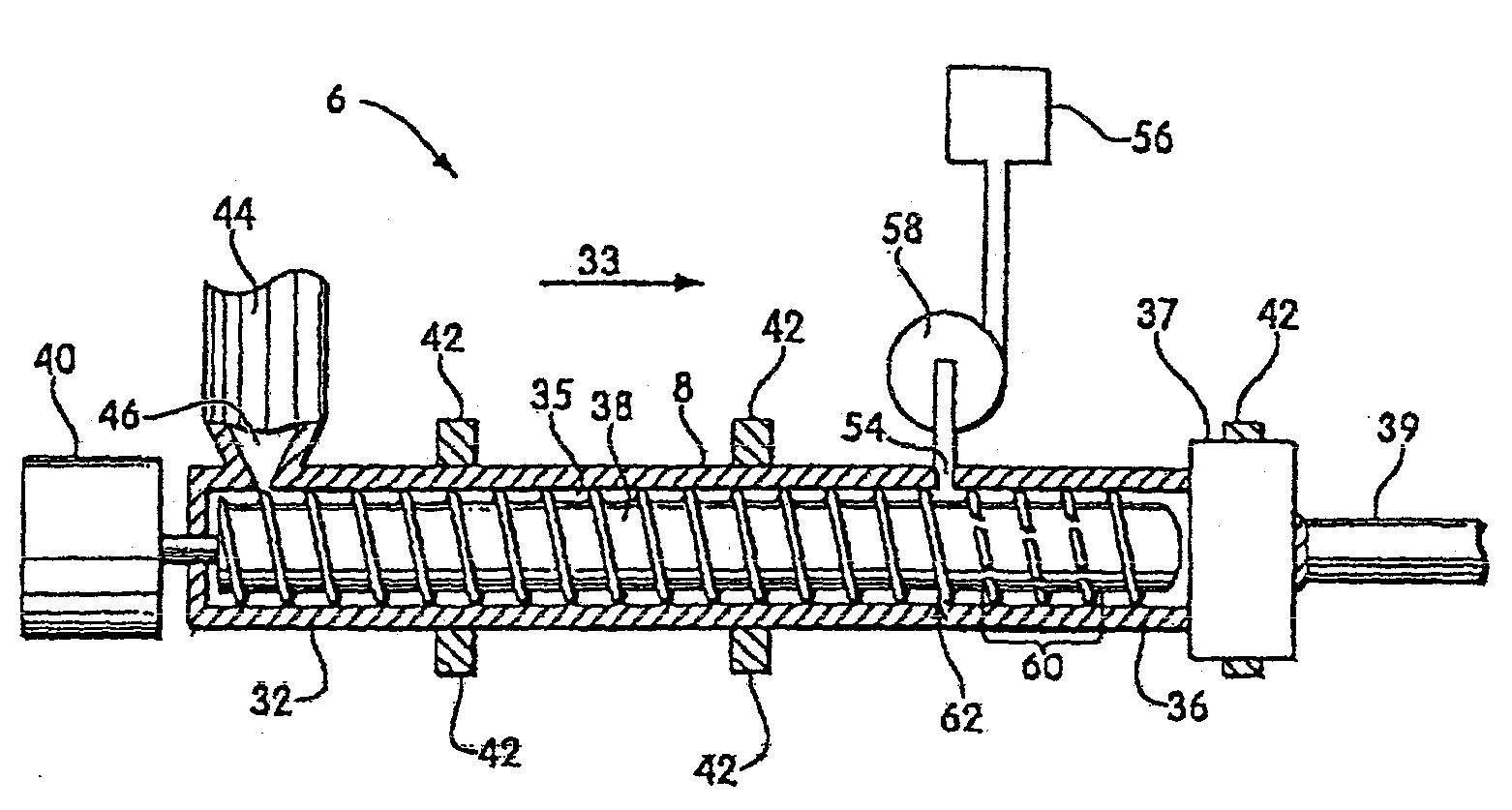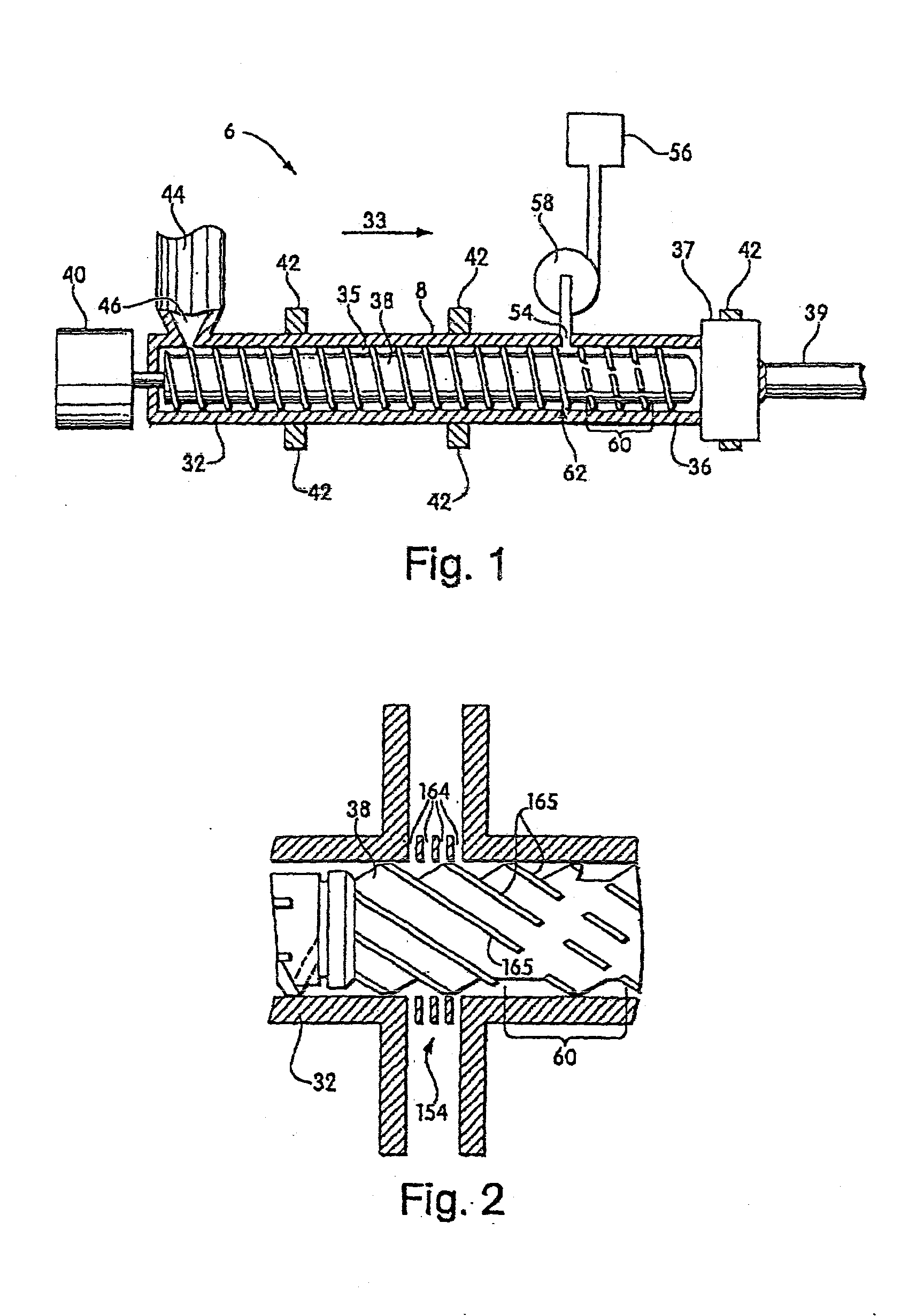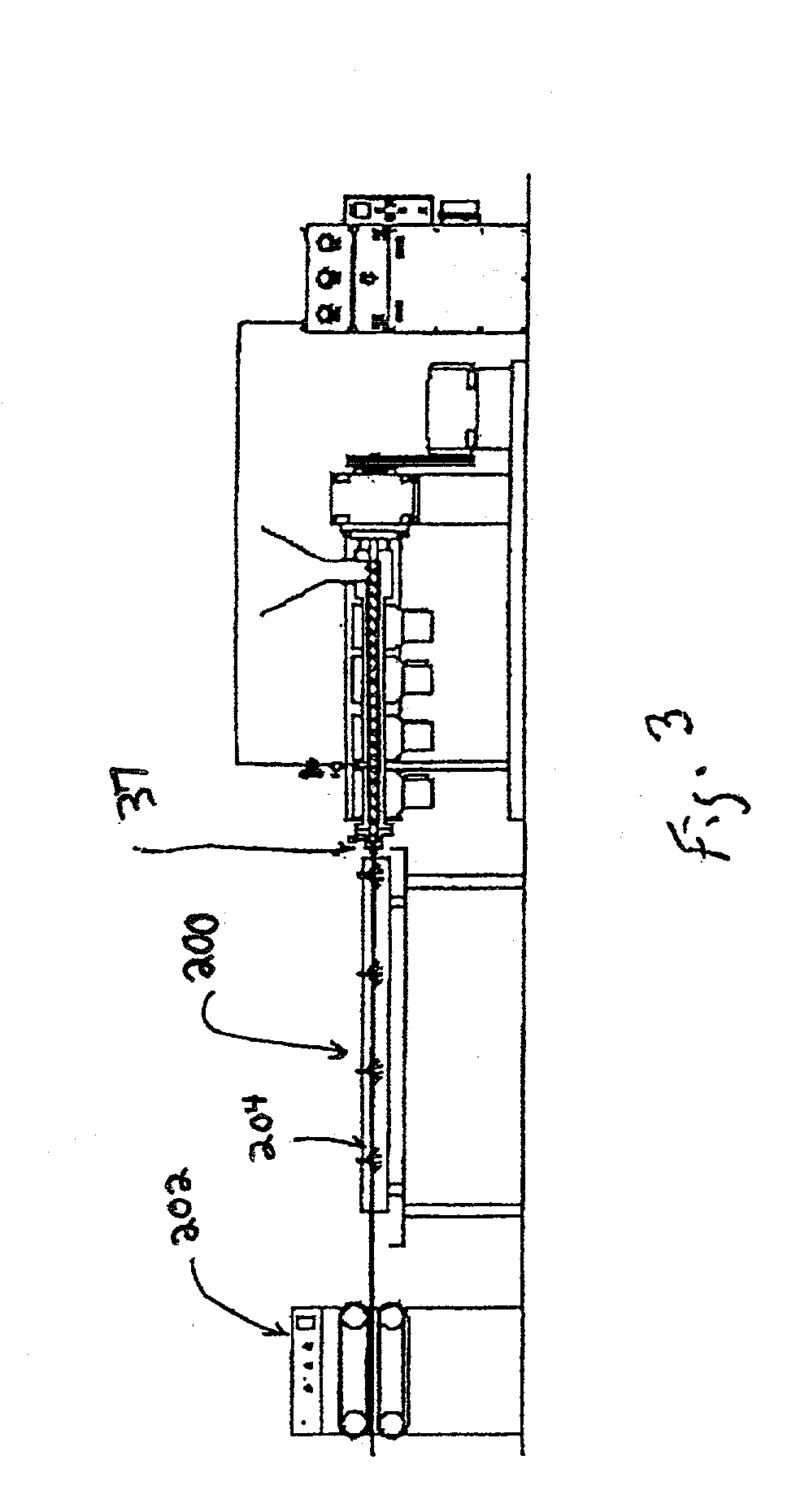Thermoplastic elastomeric foam materials and methods of forming the same
- Summary
- Abstract
- Description
- Claims
- Application Information
AI Technical Summary
Benefits of technology
Problems solved by technology
Method used
Image
Examples
examples 2-13
Extruded Product using Nitrogen as Blowing Agent
[0095] See procedure for Example 1. The material and process condition differences between the Examples are given in Table 1 below. The properties of the resultant extruded foam product are given in Table 2.
1TABLE 1 Process Conditions for Examples using Nitrogen as Blowing Agent Exit Gap Exit Taper Output Tm N2 Example Material in Angle deg lb / hr deg F. Level 1 Santoprene 201-73 0.028 14 66 329 0.32 2 Santoprene 201-73 0.028 0 67 327 0.33 3 Santoprene 201-73 0.028 6 92 340 0.30 4 Santoprene 201-73 0.028 6 88 341 0.41 5 Santoprene 201-73 0.028 6 88 341 0.50 6 Santoprene 201-68W 0.028 6 100 339 0.25 7 Santoprene 201-68W 0.028 6 97 339 0.25 8 Santoprene 121-68W 0.028 6 101 337 0.39 9 Santoprene 121-68W 0.028 6 101 336 0.40 10 Sarlink X8168 0.021 6 100 327 0.40 11 Sarlink X8168 0.028 6 100 325 0.30 12 Uniprene 7100-64 0.028 6 100 331 0.16 13 Uniprene 7100-64 0.028 6 100 319 0.28
[0096]
2TABLE 2 Foam Properties for Examples using Nitrogen as ...
example 14
Extruded Product using Carbon Dioxide as Blowing Agent
[0104] Extrusion Equipment: A line for the production of extruded profiles was assembled employing a 60 mm diameter, 34:1 L:D single screw extruder (Krauss-Maffei, Munich, Germany). An injection system for the injection of CO.sub.2 into the extruder was placed at approximately 20D diameters from the feed throat of the extruder. The injection system included 2 equally spaced circumferential, radially-positioned ports, each port including 176 orifices, each orifice of 0.020 inch diameter, for a total of 352 orifices. The injection system included an air actuated control valve to precisely meter a mass flow rate of blowing agent at rates from 0.04 to 3.5 lbs / hr at pressures up to 5500 psi.
[0105] The screw of the primary extruder was a specially designed screw to provide feeding, melting and mixing of the polymer / talc concentrate followed by a mixing section for the dispersion of blowing agent in the polymer.
[0106] Connected to the e...
examples 15-20
Extruded Product using Carbon Dioxide as Blowing Agent
[0114] See procedure for Example 14. The material and process condition differences and the resultant foam properties are given in Table 4 below. Example 17 produces a TPE foam having a water absorption of greater than 40 times (1-A) / A, wherein A is the foam density in g / cc.
[0115] All other Examples produce a TPE foam having a water absorption of less than 40 times (1-A) / A, wherein A is the foam density in g / cc.
[0116] FIG. 8 graphs the water absorption vs. foam density for Examples 14-20 and Comparative Examples 1-4. The lines for water absorption at various values of C as given above and shown in FIG. 4 are also overlaid on this chart for reference.
4TABLE 4 Examples using Carbon Dioxide as Blowing Agent Tm CO2 Density Water Example Material deg F. Level % g / cc Absorption % 14 Santoprene 201-68W228 334 2.4 0.36 51 15 Santoprene 201-68W228 334 1.8 0.44 22 16 Santoprene 201-68W228 334 1.2 0.46 7 17 Santoprene 201-68W228 338 2.4 0.3...
PUM
| Property | Measurement | Unit |
|---|---|---|
| Time | aaaaa | aaaaa |
| Size | aaaaa | aaaaa |
| Size | aaaaa | aaaaa |
Abstract
Description
Claims
Application Information
 Login to View More
Login to View More - R&D
- Intellectual Property
- Life Sciences
- Materials
- Tech Scout
- Unparalleled Data Quality
- Higher Quality Content
- 60% Fewer Hallucinations
Browse by: Latest US Patents, China's latest patents, Technical Efficacy Thesaurus, Application Domain, Technology Topic, Popular Technical Reports.
© 2025 PatSnap. All rights reserved.Legal|Privacy policy|Modern Slavery Act Transparency Statement|Sitemap|About US| Contact US: help@patsnap.com



